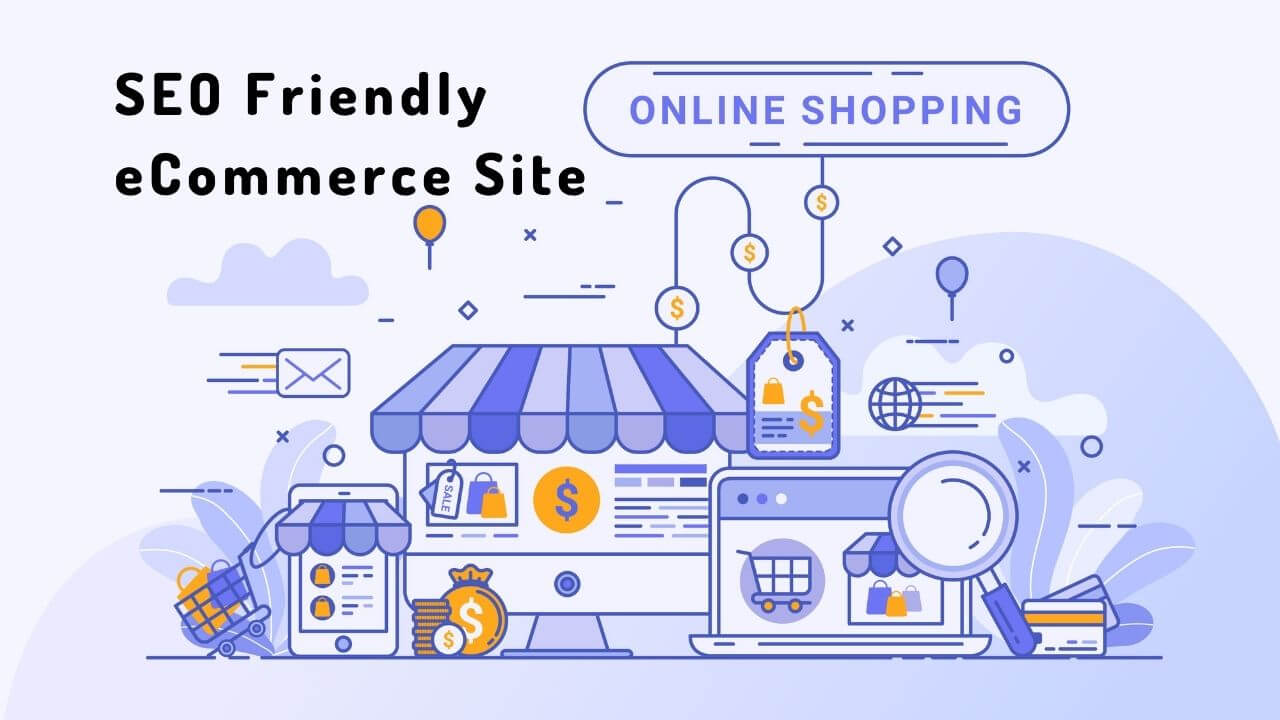The eCommerce sector has grown tremendously as more consumers understand the convenience of purchasing online and having items delivered to their homes. If you are going to establish an eCommerce website or if you currently have one and want to improve the customer experience, here are some design ideas to get you started:
1. Need to focus on the Graphics
Your website's style and layout are just as important as its content. Why? The first thing visitors notice is the design, which influences whether they stay on your page or leave. As a result, make certain that the visuals are aesthetically appealing and acceptable for the target audience. for example, if you're selling children's toys then use bold colors and interesting typography.
2. Make Use of White Space
The purpose of white space in a newspaper and on a website is similar: it separates different categories of content from one another and makes the page look cleaner and more organized.
3. Create a Category Structure
Nobody enjoys scrolling endlessly over text. Separate your product categories to make visiting your website easier for your readers. Nike, for example, has several product categories, including Men, Women, and Children. There are sub-categories and menus beneath these categories, such as Clothing, Shoes, and so on, as well as even more sub-categories. This hierarchy makes it quite simple for consumers to discover what they're looking for.
4. Google-Friendly Product Descriptions
Nearly 87 percent of customers read product descriptions, which helps them learn more about the product and make a more informed purchasing decision. Aside from that, product descriptions provide a chance to inform search engines such as Google about the nature of your items. Search engine optimization (SEO) tactics such as adding keywords to product descriptions assist you to boost your product page rating in search results.
5. Optimize the Page Loading Speed
Regardless of the sort of website you possess, speed optimization is a very significant component in SEO. This is simply due to users' short attention spans. Page speed is critical and cannot be stressed. In general, if a website does not load within 2-3 seconds, people are likely to leave and visit another site.
6. Mobile Responsive
According to multiple studies, 79 percent of smartphone users have made an online purchase using their mobile devices in the previous six months. As a result, as an eCommerce website, you must ensure that your site is mobile-friendly. Google's Mobile-Friendly Test may be used to determine your website's mobile-friendliness score.
7. Make the Process Painless as Possible
Keep the buying experience as simple as possible. It should be simple and convenient for your consumers so that they don't abandon their attempts to make a transaction halfway through. Carts are frequently abandoned simply because the checkout procedure is complex, requiring necessary signups or logins. Signups can be beneficial, but rather than making it a must, you might give discounts in return for signing up.
8. Share Useful Contents or Blogs
Blogging is a useful method to remain in touch with your consumers. By writing about your goods and industry on a regular basis, you keep your audience informed, entertained, and interested. Targeting long-tail keywords is advantageous since you have a better knowledge of the user's search intent and, as a result, have a higher likelihood of conversion.
Read Article: What Role Does Good Web Design Play in SEO?
9. Start Experimenting
It's critical to keep up with trends and discover what's working for your competition. What worked well for Company X may not work as well for Company Y. Experimentation is essential! Experiment with different types of content, goods, marketing, layouts, and other features to determine what works best for you and stick with it.
10. Invest in a User-Friendly Website
You don't want your consumers getting confused between pages because they don't know how to check out, add additional goods to the basket, or locate your shipping policy. As a result, make the navigation as simple as feasible.
11. Have All of the Required Elements
Basic components such as a search bar, filter choices, ratings, reviews, sort by, and so on are required for eCommerce websites. Including these choices improves the purchasing experience significantly.
12. Optimize Your Website for Search Friendly
It makes no difference how good your items, prices, or content are if customers can't locate your website.
To ensure that your website is easily found on Google and other search engines, make sure that your whole site is SEO-friendly, including product descriptions, blogs, and all of your web pages.
If you are unsure how to use SEO, you may seek assistance from SEO specialists who specialize in eCommerce sites.
13. Implement eCommerce Web Analytics
Sales are not the sole statistic that affects the performance of your company. Several additional characteristics, such as the day and time of producing purchases, geographical location, visits, and average time spent on site, provide a complete understanding of consumer behavior and areas for development.
How to Begin Designing Your Website -
- Purchase a domain after contemplating your brand name and goal. Make it one-of-a-kind and something you'd like to have in the long run.
- Select website hosting based on your needs.
- Create a website with a website builder like WordPress or Wix.
- In a few minutes, you may configure your theme by altering an existing template.
- Post images and links to significant pages and material that others find interesting.
- Use social media and email to promote your items.
That's all there is to it! Thirteen pointers to help you create an eCommerce website that ranks higher in search engines and keeps consumers interested. Good luck with your sales!




So nice ! The tutorial was very useful for me